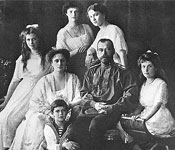Romancing the Revolution; Russians may not celebrate the start of the Revolution officially, but that has not stopped them from finding ways to revel in revolution.

(Russia Beyond the Headlines – rbth.ru – Chris Fleming, special to RBTH – November 7, 2013)
Dr. Chris Fleming is a senior lecturer in Humanities and Communication Arts at the University of Western Sydney.
For much of the twentieth century, Russians celebrated the October 1917 Revolution the event which brought Lenin and his party to power. Russia no longer officially celebrates the revolution. A new holiday was established instead under Vladimir Putin’s presidency in 2005 National Unity Day.
But that celebrations of the revolution are no longer officially sanctioned does not, of course, mean that they don’t occur.
One of the signal features of the official histories propagated following the October Revolution was that they produced two symmetrical distortions: one concerning the dramatic violence of the Revolution and the other concerning the peace that followed it.
As we now know, the revolution itself was nowhere near as dramatic as later historical and theatrical reconstructions of it suggested. Indeed, much of the violence surrounding the so called “storming of the Winter Palace” resulted from general confusion, lootings (especially of liquor stores), and the predictable results of combining alcohol, male bravado, and loaded weapons.
But neither, as historians continue to count and recount the tens of millions of bodies that fell in the decades that followed, was the Soviet Union the kind of paradise that its PR managers invariably pretended that it was.
But as both the banality of the revolution and the brutality of its aftermath fade from collective memory, our capacity to romanticize both becomes ever more pronounced. And this is not simply a Russian tendency.
Trendy intercity cafés throughout the west have become billboards for all species of revolutionary iconography. The kaleidoscope of images on offer a red star shoulder bag, a dashing Che Guevara t-shirt, a peaked cap with the hammer and sickle suggest a meeting of local members of a now-realized Fifth International.
As it turns out, of course, it is no such thing. These are bankers, software developers, and university students checking Facebook, flipping through newspapers, and “networking.”
However one judges this odd revolutionary parade, it is in itself not terribly remarkable simply one facet of a more general tendency in contemporary culture. Revolutionary iconography has become, like many of the cultural trinkets of the past, mere parades of signs that people use to make profits and construct their identities.
Che Guevara was, of course, an Argentine Marxist: but he is also a cap, a T-shirt, a mug, a poster, an ice cream flavor (“Cherry Guevara”), and the basis of high-couture “military wear” which the relevant website tells us is “the quintessential revolutionary fashion-warfare statement.”
We might be inclined to see these kinds of gestures as cheap even cynical capitalist exploitations of genuine political symbols and figures, that to associate the hammer and sickle with a brand is a distortion of the worst kind.
Of course, there is nothing inherently wrong with the kinds of emotional upswings occasioned by dressing in red and cheering the revolutionary cliche – that exciting statement which demands our assent at the precise moment we become unsure of what it is that we’re shouting.
In the late ’60s, French leftist became experts at this species of declamation: “Be Realistic Demand the Impossible!” or “The Dream is Reality!” were among the calls heard around Paris in May 1968; as examples, they fit very well into the history of revolutionary rhetoric.
It is equally important, however, to note that they could also just as well be titles for books by Dr. Phil or slogans for the newest Windows operating system. In many respects, revolution represents one of the most successful marketing campaigns of the last two hundred years.
Of course, not all countries are comfortable with the revolutionary flavors of modern cool, even in its ironic guises. Moscow may still be home to the Red October Chocolate Factory and Aeroflot uniforms continue to carry the hammer and sickle, but in other parts of Eastern Europe certain communist symbols are banned for their associations with a history of totalitarian horror.
This is, in the very least, understandable. But for much of the world, the revolution has become simply a symbol of cool, of tattooed arms raised against imaginary foes for indiscernible reasons arms then lowered and fists promptly unclenched once the foccacias have arrived.
Indeed, surveying trendy cafés, YouTube à la mode, and the smattering of communist rallies does little to shake the feeling that – for most of the world – revolution has become so pure, so metaphysical, that either it never ends – or, alternatively, hardly seems to take place at all.
Article also appeared at http://rbth.ru/opinion/2013/11/07/romancing_the_revolution_31531.html
